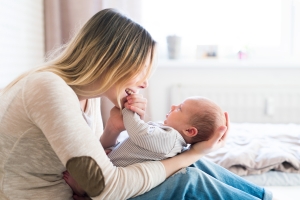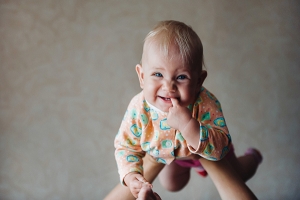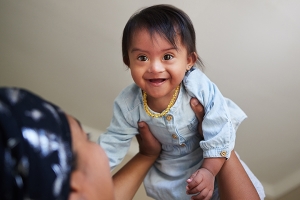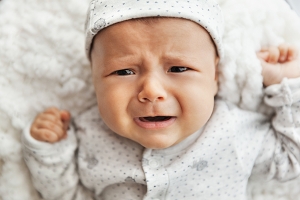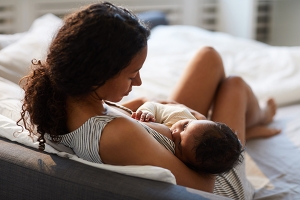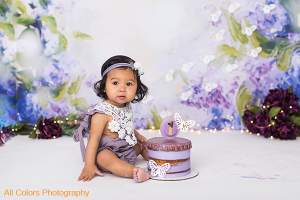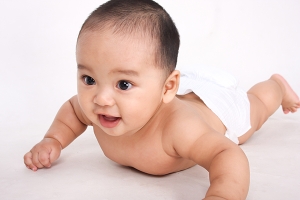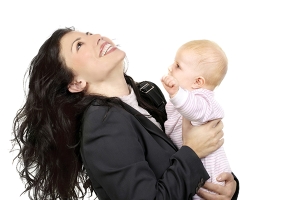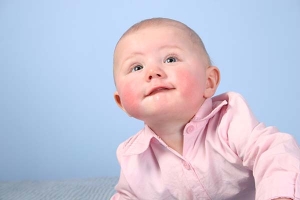Beaches, parks and backyards—summer is about fun in the sun. But there’s nothing fun about a sunburned baby. Little ones are especially vulnerable to the sun’s burning rays. According to the Skin Cancer Foundation, a single blistering sunburn in childhood more than doubles the risk of developing melanoma later in life. The American Academy of Pediatrics reports that most parents aren’t doing enough to protect babies and toddlers from sunburn. Sunscreens are often applied incorrectly, leaving little ones exposed to skin damage. Here’s how to keep your little one happy and safe this summer.
The Label Game
With everything from creams and sprays to goggles and glasses boasting sun protection, labels can get confusing. SPF stands for Sun Protection Factor—it represents the amount of time the product protects skin from burning.
Ultraviolet protective factor, or UPF, refers to the amount of ultraviolet radiation that reaches the skin. When choosing sun-safe products, look for an SPF of at least 15, which keeps skin unburned 15 times longer than skin without protection, or a UPF of 30 or higher, which lets through only one out of every 30 UV units.
Made in the Shade
For babies six months and younger, the safest sun is no sun; per the Skin Cancer Foundation, the youngest babies should stay in the shade when possible. Keep babies away from the sun's burning rays during peak exposure hours from 10 a.m.–4 p.m., stay in the shade outdoors, and invest in a durable umbrella or pop-up shade tent for the beach or pool.
Sunblock Shock
Most babies over two months old can safely wear sunscreen (but again, babies this young should be kept out of direct sunlight). Choosing the right one can be frustrating. Here's help: Natural sunblocks like those made by California Baby contain zinc oxide or titanium dioxide, ingredients commonly used in diaper rash creams and well-tolerated by most babies. These physical sunblocks actually block UV light, creating a protective barrier on the skin.
Conventional sunscreens (also called chemical sunscreens) like those made by Coppertone work in another way, by absorbing UV light. Either type works well; conventional and physical sunscreens can also be layered to create a more effective, lasting sunlight barrier.
Apply sunscreen to your baby before leaving the house. UV filters need 20-30 minutes to form a protective layer on the skin, and sunscreen won’t adhere well once your baby gets sweaty or damp. Always reapply sunscreen (even those marked “waterproof”) after swimming and toweling off. And don’t forget these commonly burned hotspots: the nose, head (particularly on fair-skinned babes or those without hair), and the tops of hands and feet.
Functional Fashion
Photoprotective clothing is helpful for babies, especially when parents are leery about applying sunscreen to small infants. Lightweight, long-sleeved clothing can offer protection from the sun’s rays, but take note: a basic white cotton tee only offers an UPF value of about 7. Tightly-woven, darker fabrics let through less sunlight, therefore offering more protection; denim, canvas and fabrics labeled with a UPF value of 30+ are good bets. To increase the shade-factor in your baby’s wardrobe, look for a laundry additive called Sun Guard. It contains the protective agent Tinosorb, which ramps up UPF value of clothing and lasts through 20 washes.
Look for sunhats with a brim of at least three inches, sunglasses that wrap around the child’s face (wraparound shades increase sun protection by 5 percent), and a long-sleeved cover-up for baby to wear once pool time is through. And don’t forget baby gear: your stroller’s umbrella, your baby carrier’s hood, and a receiving blanket tucked into your diaper bag will offer extra protection to help keep your summer sunny side up.
Malia Jacobson is a nationally published journalist and mom of three.
Published July 2016







